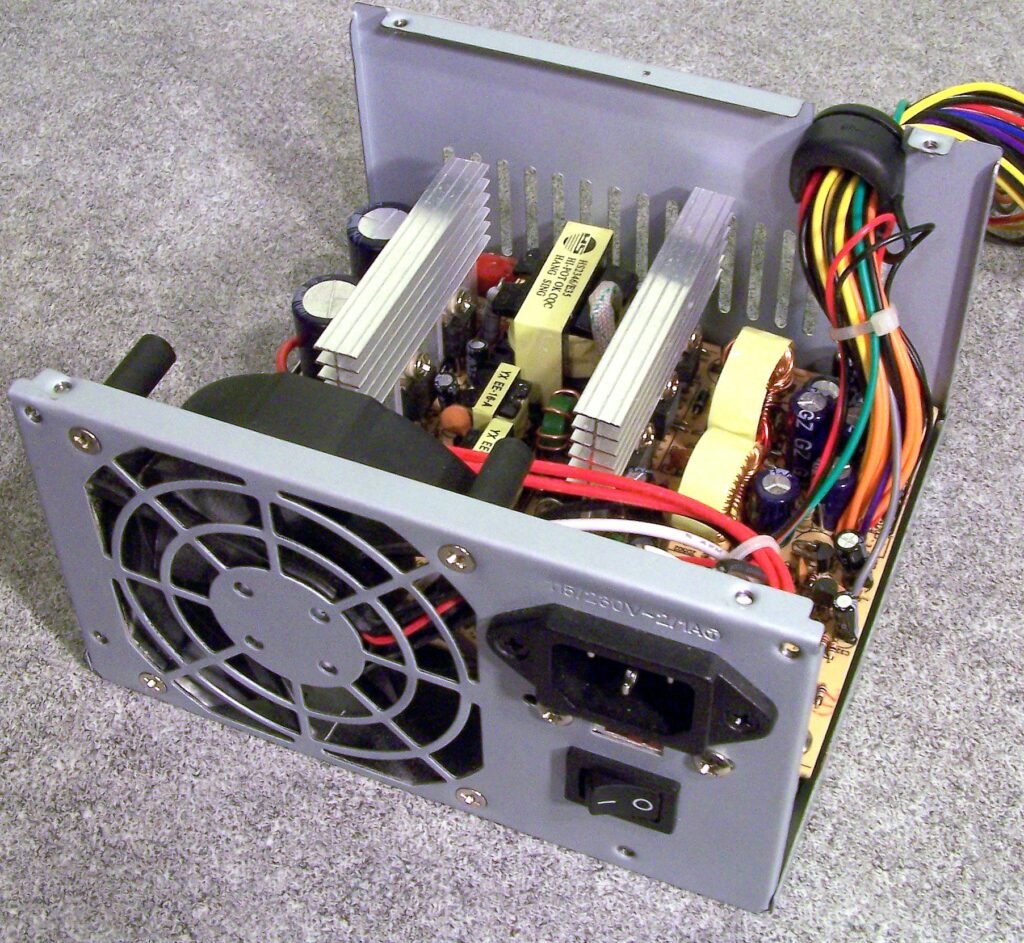Hard drive. Explanation: A hard drive is a storage device for computers. It’s separate from the motherboard.
Let’s explore these omissions to gain a clearer understanding.
Table of Contents
Hard Drive:
Hard drives, also referred to as storage devices, are essential for storing data, applications, and operating systems. Unlike components integrated directly onto the motherboard, hard drives are standalone units. They come in various forms including HDDs (Hard Disk Drives) and SSDs (Solid State Drives), offering different storage capacities and speeds.
The motherboard facilitates data transfer between the hard drive and other system components through interfaces like SATA (Serial Advanced Technology Attachment) or NVMe (Non-Volatile Memory Express).
Power Supply Unit (PSU):

The PSU is a critical component responsible for converting alternating current (AC) power from a wall outlet into direct current (DC) power suitable for the computer’s components. It provides power to the motherboard, CPU, GPU, drives, and other peripherals.
PSUs come in different wattages and efficiency ratings to meet the power demands of various systems. They are typically housed in a separate enclosure outside the motherboard and connected via cables.
Graphics Processing Unit (GPU):
While some motherboards may feature integrated graphics processors, high-performance GPUs are separate components installed onto the motherboard via expansion slots such as PCIe (Peripheral Component Interconnect Express).
GPUs are specialized processors designed to handle complex graphical calculations efficiently. They are essential for tasks like gaming, video rendering, and 3D modeling, offering superior graphics performance compared to integrated solutions.
Optical Drive:
Optical drives, such as CD/DVD drives, are used for reading and writing data to optical discs. They are separate components connected to the motherboard via interfaces like SATA (Serial ATA) or IDE (Integrated Drive Electronics).
Optical drives have become less common with the rise of digital distribution and USB storage solutions, but they are still used for tasks like installing software, playing media, and archiving data on discs.
Also Read: Can Power Supply Damage Motherboard – A Complete Overview How To Check It In 2024!
Sound Card:
While many motherboards feature onboard audio solutions, dedicated sound cards are separate components that offer higher quality audio processing and additional features. Sound cards are installed onto the motherboard via expansion slots like PCIe.
They are essential for tasks such as gaming, audio production, and high-fidelity audio playback, providing improved sound quality and more advanced audio processing capabilities compared to integrated solutions.
Network Interface Card (NIC):
NICs are dedicated components responsible for facilitating network connectivity, either through wired Ethernet or wireless Wi-Fi connections.
While some motherboards may include integrated Ethernet ports or Wi-Fi adapters, standalone NICs offer additional features such as faster connection speeds, advanced networking protocols, and improved reliability. They are installed onto the motherboard via expansion slots or connected externally via USB or Thunderbolt ports.
Expansion Slots:
Expansion slots like PCIe (Peripheral Component Interconnect Express) and DIMM (Dual In-line Memory Module) slots allow users to connect additional components to the motherboard. These include graphics cards, sound cards, network cards, and additional RAM modules.
While the slots themselves are integrated into the motherboard, the components inserted into them are separate and must be installed individually to expand the system’s capabilities.
Cooling Solutions:

Proper cooling is crucial for maintaining optimal performance and prolonging the lifespan of computer components. While motherboards may feature heatsinks or heat spreaders to dissipate heat from the CPU, chipset, and other components, dedicated cooling solutions such as CPU coolers, GPU coolers, case fans, and liquid cooling systems are separate components.
They are designed to efficiently remove heat from critical components, preventing overheating and ensuring stable operation under heavy loads.
FAQ’s
1. What is a hard drive?
A hard drive is a storage device used in computers to store data, applications, and operating systems.
2. Is a hard drive integrated into the motherboard?
No, it’s not. Hard drives are standalone units separate from the motherboard.
3. What are the different types of hard drives available?
Hard drives come in various forms including HDDs (Hard Disk Drives) and SSDs (Solid State Drives), offering different storage capacities and speeds.
4. What is the function of a Power Supply Unit (PSU)?
The PSU converts AC power from a wall outlet into DC power suitable for computer components, providing power to the motherboard, CPU, GPU, drives, and peripherals.
5. Where is the PSU typically located?
PSUs are housed in a separate enclosure outside the motherboard and connected via cables.
6. Are GPUs integrated into the motherboard?
No, high-performance GPUs are separate components installed onto the motherboard via expansion slots like PCIe.
7. What tasks are GPUs essential for?
GPUs are essential for tasks like gaming, video rendering, and 3D modeling, offering superior graphics performance compared to integrated solutions.
8. What is the function of an optical drive?
Optical drives are used for reading and writing data to optical discs like CDs and DVDs.
9. Are sound cards integrated into the motherboard?
While some motherboards feature onboard audio solutions, dedicated sound cards are separate components installed onto the motherboard via expansion slots like PCIe.
10. What tasks are NICs responsible for?
NICs facilitate network connectivity, either through wired Ethernet or wireless Wi-Fi connections.
11. Where are expansion slots located on the motherboard?
Expansion slots like PCIe and DIMM slots are integrated into the motherboard for connecting additional components.
12. Why are cooling solutions important for computer components?
Proper cooling is crucial for maintaining optimal performance and prolonging the lifespan of computer components by dissipating heat generated during operation.
Conclusion
Understanding the components not found on a motherboard is crucial for comprehending the full scope of computer hardware. While the motherboard serves as a central hub for connectivity, certain essential functions such as storage, power supply, graphics processing, optical reading/writing, networking, expansion, and cooling require separate components for efficient operation.